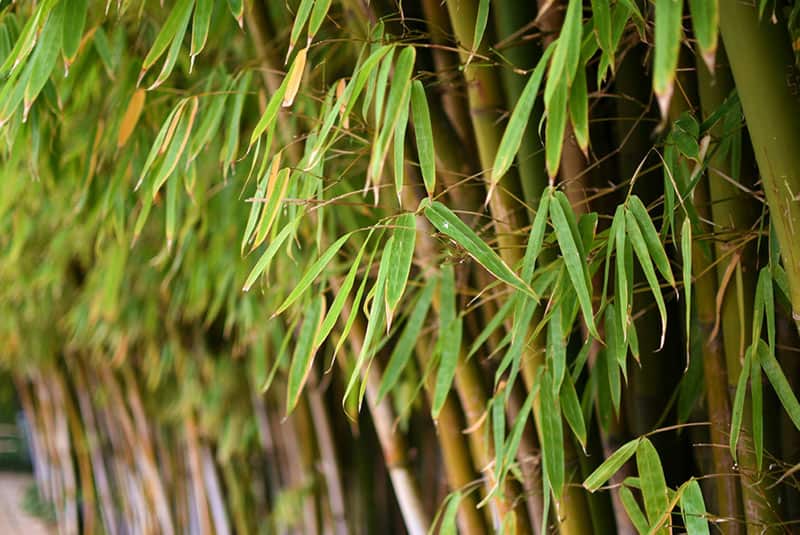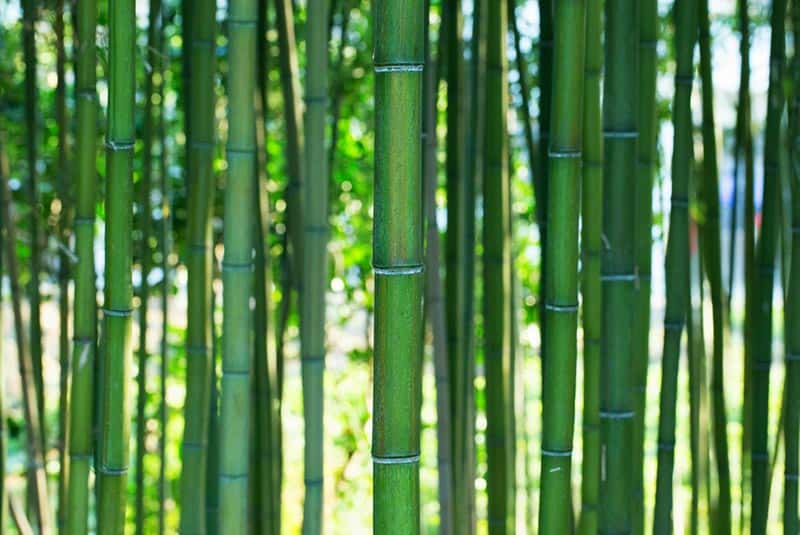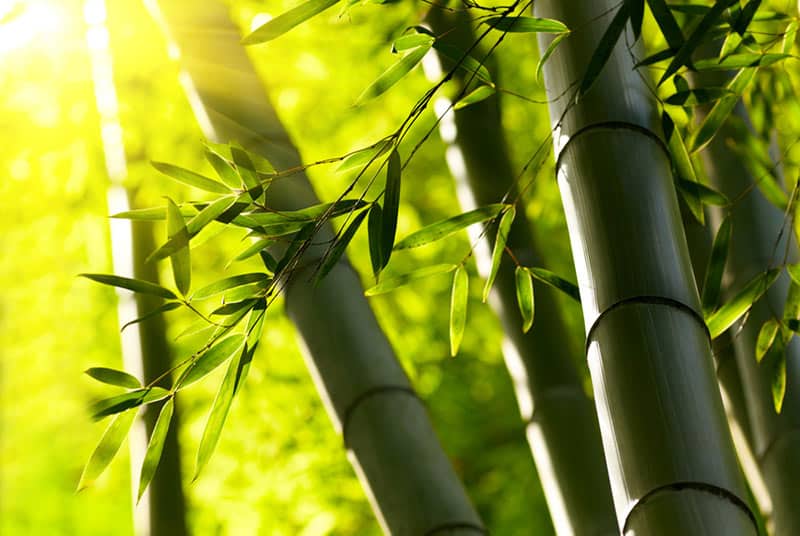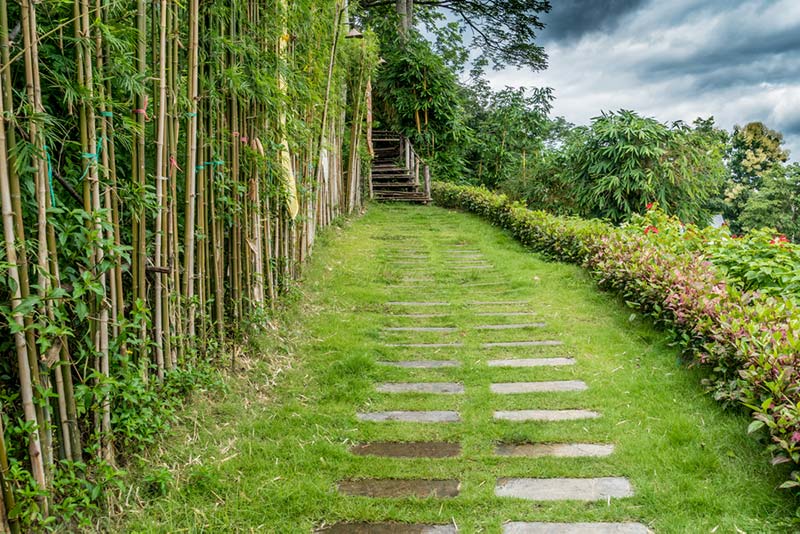Japanese Hedge Bamboo: A Great Choice For Your Hedge
Take a deep breath and imagine a relaxing Sunday afternoon in a beautiful tropical oasis. You’ll be sitting comfortably in your lounge chair while listening to the faint rustling of bamboo leaves. Relaxing, isn’t it?
It’s no surprise that easy-to-grow bamboo is iconic of breezy tropical holidays and Japanese gardens. Some garden owners have mixed emotions about planting bamboo in their garden, however, and with good reason. Bamboo are generally one of the fastest growing plants around. While this sounds like a big advantage, some types can grow unpredictably into a thicket and become difficult to maintain if left unattended. Bamboo grows so fast, in fact, that it has been used for reforestation purposes.
Before you rule out growing a bamboo hedge in your garden, there are other types like the Japanese hedge bamboo that are quite garden-friendly. These types can be used for hedging and for ornamental purposes as well.
What’s more, these thrive well in urban spaces and are easy hedges to maintain. You want to go for these types when picking bamboo for hedging.
Why is bamboo popular for hedging?

When creating a private space in their garden, some homeowners find that concrete walls can be somewhat claustrophobic and severe. Because of this, they’re moving away from this design and opting to choose sustainable and natural alternatives such as bamboo hedges.
Bamboo hedges have become increasingly popular because they give your garden a relaxing ambience, while ensuring that you’re nicely tucked in your private space.
With all the available types of bamboo out there, it’s important to choose one that’s best suited for your hedging needs. Things you’d want to consider are garden space, height requirement, ease of maintenance, and ornamental purposes, if there are any.
Running vs. clumping bamboo: which is better for hedging?
Running bamboo
Running bamboo is also referred to as ‘invasive’ bamboo. This should give you an idea about their ease of maintenance. Not a very good idea when you’re after privacy and relaxation, is it?
Running bamboo are called invasive bamboo because they can outcompete other plants for space and can take up any available land area they can grow on. They have a root system that can spread in unpredictable directions and shoots that can form thickets or groves.
While running bamboo may be ideal in wide open spaces such as forests and jungles, it may not be the most suitable choice for hedges in your garden.
Clumping bamboo
Unlike running bamboo, clumping bamboo grow in the same spot where they are planted. This makes them ideal for garden hedges when you want to create a private space without causing foliage disturbance to your neighbors. They are fairly easy to maintain and are not worrisome when it comes to their growth.
Some of the best clumping bamboo varieties are slender weavers, Chinese dwarf, Timor black, Goldstripe, China gold, Ghost bamboo, and Japanese hedge.
Why use Japanese hedge bamboo for your garden hedge

Japanese hedge bamboo is a variety of clumping bamboo that can grow up to 3 metres in height. Its graceful appearance makes it a popular choice as an ornamental plant or as an accent in Japanese gardens.
Its tight clumping and compact size also makes for dense hedging. It is ideal for creating private spaces even in small gardens. You can use Japanese hedge bamboo for screening and as a windbreak for homes in windy areas. Their leaves rustle gracefully to the wind and add a cooling element to your garden.
FAQs about the Japanese hedge bamboo
What are the benefits of using Japanese hedge bamboo in your garden?
Because Japanese hedge bamboo can grow into dense clumps, it is a great choice for privacy screens and windbreak. You can also use it as an effective noise barrier. Bamboo is an excellent way to incorporate shade while still allowing some colour and sunshine into your garden.
Is it easy to take care of?
You’re in luck because bamboo is fairly hardy and easy to grow. It is also resistant to harsh weather conditions. Japanese hedge bamboo thrives in an environment with plenty of sunlight and can withstand windy weather well. As long as it is not subjected to prolonged cold, it can tolerate temperatures of down to -80 Celsius. The Japanese hedge bamboo variety is ideal for Perth conditions, in particular.
What are the usual dimensions of this variety?
The Japanese hedge bamboo’s height makes it ideal for creating private spaces in your garden. It can grow between 2m – 7m tall, with an average height of 3m. The diameter of the cane is between 1cm – 3cm, with an average diameter of 2cm.
What are the other uses of bamboo?
Did you know that bamboo is one of the most versatile plants around? You can practically live off on this plant!
In some Asian countries, they use its poles to make sturdy waterproof houses. Bamboo can also be used for making paper and other household items like drinking glasses and plates. In China and the Philippines, bamboo is used for steaming food like rice and dimsum. Young bamboo shoots are used in Chinese cooking and are a popular ingredient in their sauteed dishes.

The bamboo experts
Have any questions about growing Japanese hedge bamboo in your garden or want to share your experience with us about growing this type of hedge? Let us know by giving our hedge trimming experts a call at Lawn.com.au. We’d love to hear from you!

